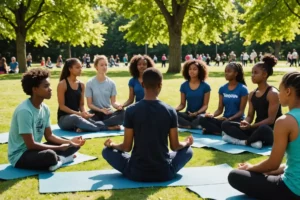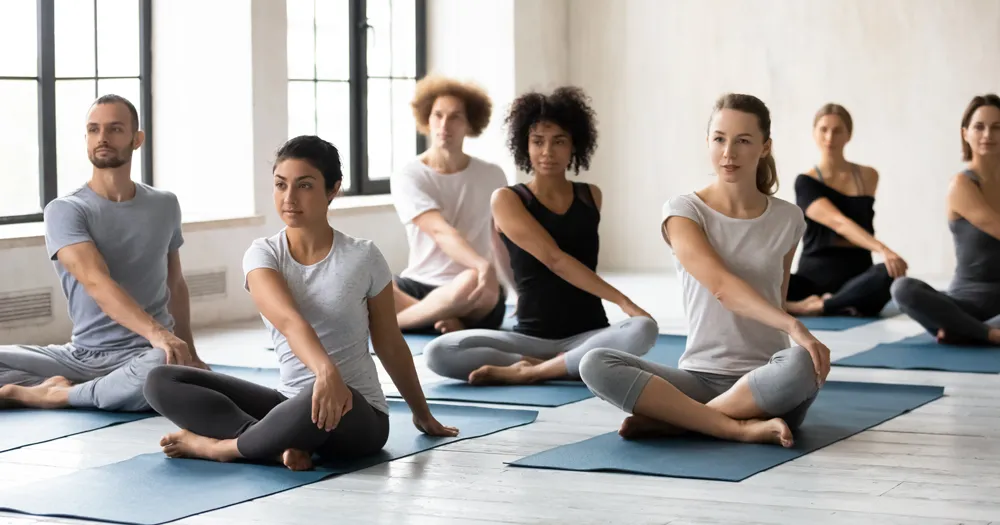A recently published scientific study has revealed that regular yoga practice can significantly boost immune system function in older adults, providing a natural and effective way to maintain health and vitality during aging. The findings add to a growing body of evidence positioning yoga not just as a wellness trend but as a clinically-backed intervention for disease prevention and longevity.
As global life expectancy continues to rise, the need to support healthy aging has never been more urgent. For many older individuals, weakened immunity often translates to a higher risk of infections, chronic illnesses, and reduced quality of life. However, this new research brings hope by demonstrating that yoga, an ancient practice combining breathwork, movement, and meditation, can serve as a powerful tool to fortify the body’s natural defenses.
Study Highlights: Yoga Improves Immune Function Markers
The study, conducted by a team of researchers at a leading gerontology and public health institute, followed 200 adults aged 60 and above over a 12-month period. Participants were divided into two groups: one engaged in a structured yoga program three times a week, while the control group maintained their usual sedentary lifestyle.
Researchers tracked several immune system markers, including white blood cell activity, levels of inflammation-related cytokines, and overall immune response to common antigens. The results were compelling: those who practiced yoga consistently showed a significant increase in T-cell activity—critical for warding off infections—and a marked decrease in pro-inflammatory cytokines, which are often elevated in age-related conditions like arthritis, cardiovascular disease, and Alzheimer’s.
Participants in the yoga group also reported fewer instances of seasonal illness, better sleep quality, lower stress levels, and improved mood. These benefits, researchers argue, can collectively lead to more resilient immune functioning and greater protection against age-related decline.

The Science Behind Yoga and Immunity
While the physical postures (asanas) in yoga help improve circulation and reduce muscular tension, the real immune-boosting magic lies in the mind-body connection fostered by the practice. Yoga integrates pranayama (breathing exercises), meditation, and gentle movement—all of which have been shown to regulate the nervous system and reduce cortisol, the body’s primary stress hormone.
Chronic stress, common among older adults due to loneliness, health challenges, or financial insecurity, has long been known to suppress immune function. By calming the nervous system and lowering cortisol levels, yoga creates a more favorable internal environment for immune cells to thrive and respond effectively.
Moreover, controlled breathing increases oxygenation throughout the body, aiding cellular repair and detoxification. Meditation, a core part of many yoga sessions, activates the parasympathetic nervous system, which supports rest, digestion, and immune regeneration.
A Natural Alternative to Medications
Many older adults rely on a complex mix of medications to manage various health conditions, often leading to side effects, drug interactions, and dependence. While yoga is not a replacement for necessary medical treatments, the new findings suggest it can complement existing therapies and, in some cases, reduce the need for certain medications.
For instance, chronic inflammation—an underlying factor in many age-related diseases—can be lowered through regular yoga practice. A reduced inflammatory load not only enhances immune response but also decreases the burden on organs and systems, helping older adults maintain independence and vitality longer.
Medical professionals increasingly recognize the value of integrative approaches, and yoga is quickly gaining ground as a cost-effective, accessible intervention. Unlike prescription drugs, yoga has virtually no negative side effects when practiced under proper guidance, making it ideal for seniors with complex health profiles.
Real-World Applications: Yoga in Senior Living and Hospitals
Given the compelling results of the study, senior living centers, hospitals, and rehabilitation facilities are taking note. In the United States, programs like “Yoga for Healthy Aging” have already been introduced in retirement communities, while similar initiatives are gaining traction in Europe, India, and parts of Africa.
In Lagos, Nigeria, several wellness centers now offer senior-friendly yoga classes that focus on gentle stretching, balance, and breath awareness. These classes are often held in community centers, churches, and even outdoor parks, making the practice widely accessible and socially engaging for the elderly.
Incorporating yoga into the daily routine of older adults not only enhances their immune health but also supports mobility, mental clarity, and emotional resilience. It empowers seniors to take an active role in their wellness journey, fostering a sense of purpose and community.
Expert Opinions and Recommendations
Dr. Anita Nwachukwu, a geriatrician at the University of Ibadan Teaching Hospital, praised the findings of the study, noting that “Yoga offers a holistic approach to aging that addresses both the physical and emotional challenges of growing older. This study reinforces what we observe clinically—seniors who practice yoga tend to report fewer illnesses and higher quality of life.”
Experts recommend that older adults interested in yoga should begin with beginner-level or chair-based classes, especially if they have mobility limitations. It’s essential to work with certified instructors trained in senior yoga or yoga therapy to ensure safety and alignment.
Classes tailored for older adults typically avoid strenuous postures and instead emphasize gentle movement, breathwork, and mindfulness. The goal is not physical perfection but internal balance—a key factor in immune resilience.
A Cultural Revival of Ancient Wisdom
The resurgence of yoga as a therapeutic tool among seniors also represents a cultural revival of ancient traditions. Originating over 5,000 years ago in India, yoga was always intended to be a holistic lifestyle—not just a physical exercise. In many indigenous and Eastern philosophies, health is viewed as a harmony between body, mind, and spirit.
By embracing yoga as a regular practice, older adults today are reconnecting with that ancient wisdom and applying it to the modern challenge of aging gracefully. As science continues to validate the health benefits of these time-tested practices, the bridge between traditional knowledge and modern medicine grows stronger.
Conclusion: A Preventive Path Toward Healthy Aging
In a world where medical systems are often overburdened and pharmaceutical solutions dominate health care, yoga emerges as a low-cost, highly effective tool for prevention—particularly among older adults. This new study offers robust evidence that yoga not only enhances immune function but also supports the broader pillars of healthy aging, from emotional stability to physical flexibility.
With its accessibility, low barrier to entry, and profound impact on overall wellness, yoga deserves a place at the center of senior health initiatives. As more older individuals embrace the practice, we may soon witness a generation that not only lives longer but thrives with greater vitality, independence, and joy.





